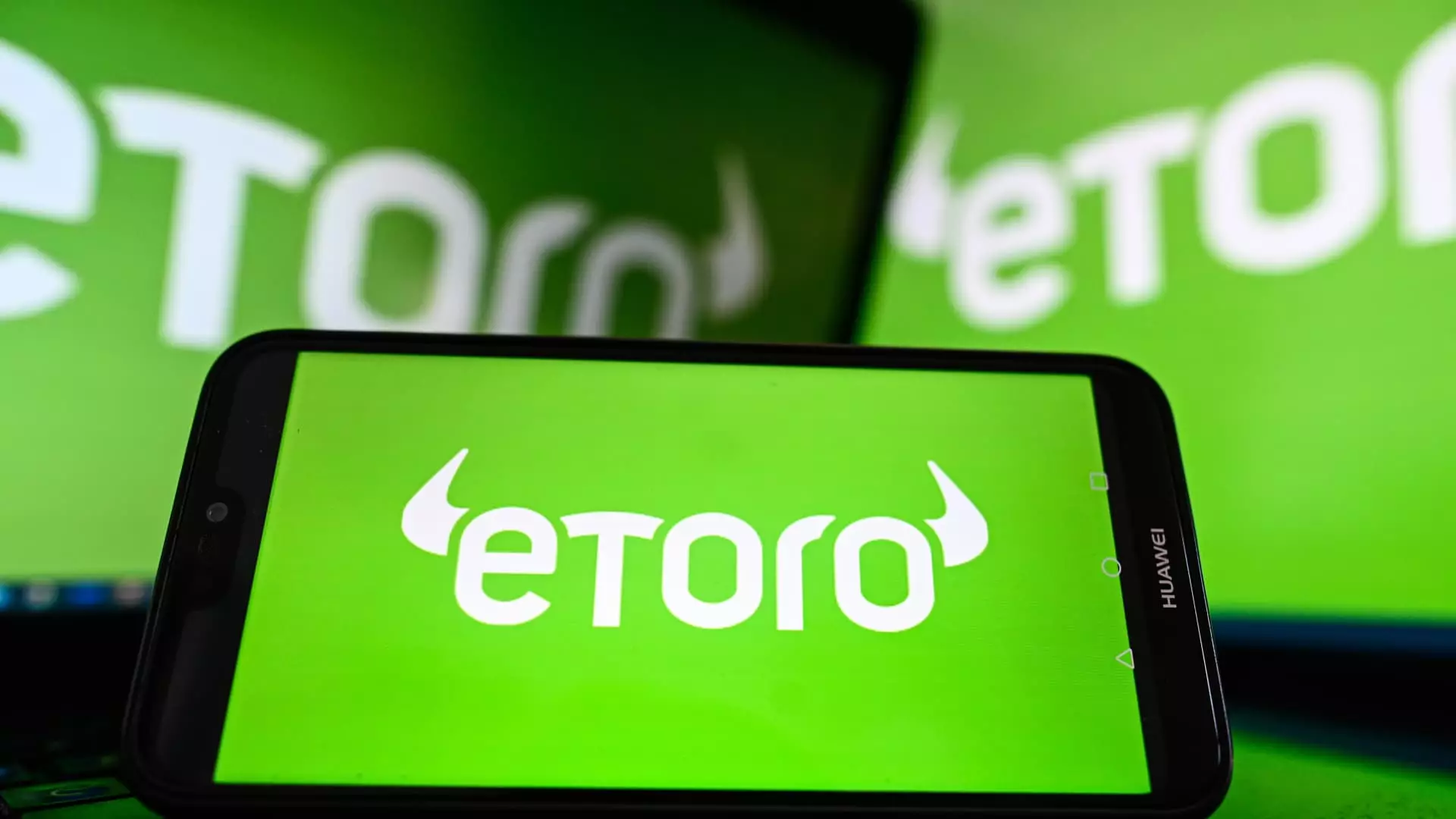The impressive debut of eToro on the Nasdaq can be interpreted not just as a successful IPO, but rather as a gleaming beacon of what’s possible in a market long deemed stagnant. With shares surging 34% to a striking opening price of $69.69, and a resulting market cap of $5.6 billion, it’s clear that investor enthusiasm has been rekindled, reflecting a broader resurgence in the fintech sector. This moment represents a pivotal shift that suggests we are exiting the despair of market corrections and entering a brighter era for initial public offerings (IPOs).
The implications of such a successful launch cannot be understated, especially as Wall Street closely watches for similar indicators from other companies. The historical significance of eToro’s performance is compelling; it falls at the precipice of a market that had been languishing under tariff anxieties and economic uncertainty. As competitors like Robinhood look over their shoulders, the stakes couldn’t be higher for fintech firms eyeing their own IPOs.
A Lesson in Timing
Yoni Assia, the shrewd CEO of eToro, suggested that external conditions were the catalyst for making the IPO decision. The past few years in the investment landscape have been tumultuous, and Assia’s remarks around market volatility signal a remarkable understanding of timing that many companies overlook. His belief that they’re awaiting the “light at the end of the tunnel” resonates with seasoned investors who thrive on periods of recovery.
However, one cannot help but question the sustainability of this momentum. Has the market truly stabilized, or is this simply a mirage, borne of temporary optimism? One might argue that Assia’s optimistic commentary might be more about marketing than reality. As other fintech entities like Chime and Hinge Health join eToro in testing the IPO waters, it will be crucial to determine whether these entries will see similar success or fall prey to the same pitfalls that have historically plagued stock market entries.
Cryptocurrency’s Rising Influence
Part of eToro’s meteoric rise can be attributed to its solid footing in the cryptocurrency market, which has become a hotbed for trading. While traditional platforms grapple with outdated business models, eToro has smartly expanded its revenue streams, showcasing a whopping 300% increase in crypto revenues from just last year. By diversifying income sources beyond conventional trading fees, eToro positions itself as a modern financial powerhouse.
However, this reliance on crypto also raises questions about the volatility of such an asset class. As eToro’s net trading contribution from cryptocurrencies grows, the risk associated with these speculative assets escalates. If we take a closer look at the company’s forecasts—a decrease in crypto accounting for 37% of trading commissions suggests an impending deceleration in this explosive growth. Will the performance of traditional investments counterbalance potential downturns in crypto trading, or are investors being set up for a fall?
Investor Profiles: Who’s Betting on eToro?
The significant investment stakes held by firms like Spark Capital and BRM Group highlight a crucial narrative of the IPO. With Spark Capital controlling 14% of eToro post-offering, it’s evident that institutional investors have placed their bets firmly on this platform’s future. This sort of backing could either lend credibility to eToro’s long-term strategy or perpetuate an unrealistic bubble.
When a company goes public, the retail investor’s interest often spikes, but the voices of institutional investors echo much louder in boardrooms. This raises the elusive question: are these large stakeholders more interested in eToro’s short-term profits or the long-term vision that Assia has articulated? As a center-right commentator would note, the whims of Wall Street often clash with the genuine needs of small investors, making this dynamic one to watch closely as time unfolds.
The Bigger Picture: IPO Market Recovery
The ripples created by eToro’s IPO extend beyond its own financials; it signals a potential recovery in the IPO market that others have been anxiously watching. Companies previously sidelined by the parenthetical doom of economic downturns may soon venture into public life. Eagerly, investors await the arrival of fresh options in a market that desperately craves stimulation.
But alongside this recovery lies skepticism. The euphoria surrounding eToro’s launch doesn’t eliminate the underlying problems facing the global economy. The balance of excitement and caution is delicate, for every surge in stock price on day one must be tempered against ongoing geopolitical tensions and economic realities that can swiftly change investor sentiment.
Overall, eToro’s IPO serves not merely as an isolated event but rather as a focal point that encapsulates both promise and precariousness in today’s financial landscape.

